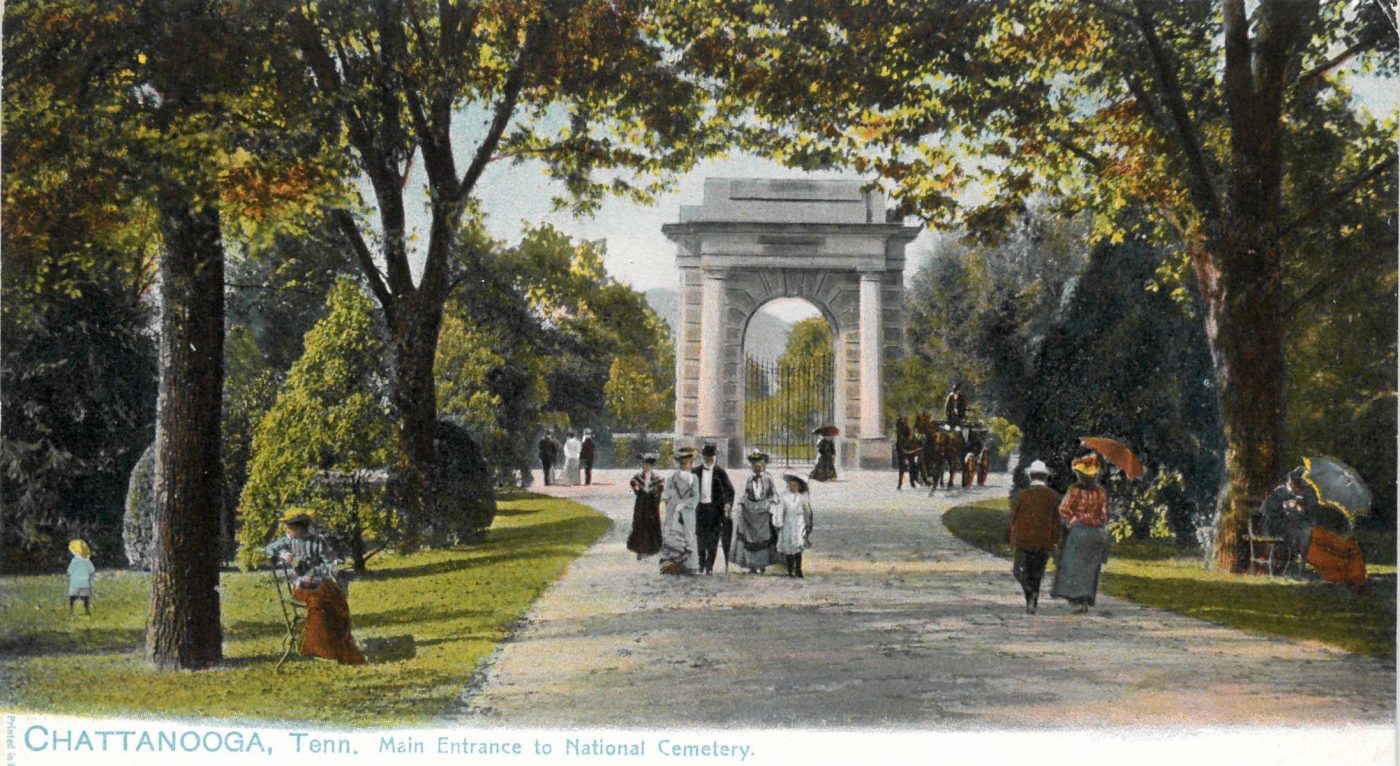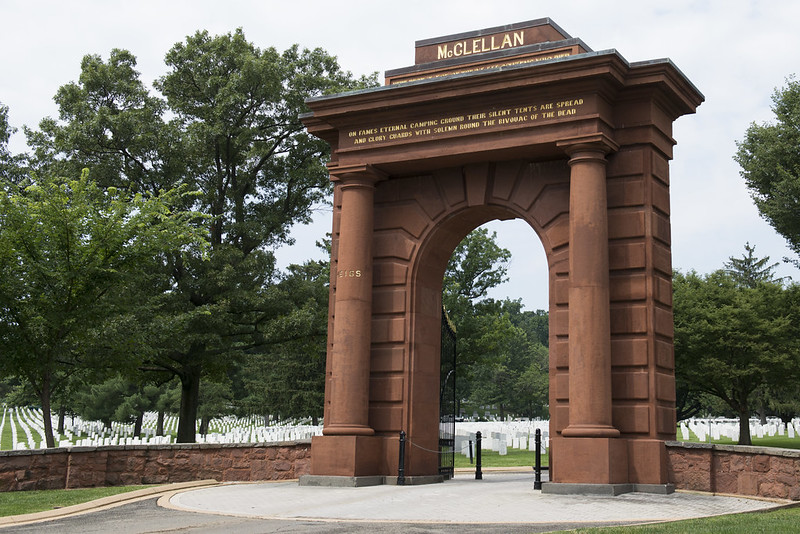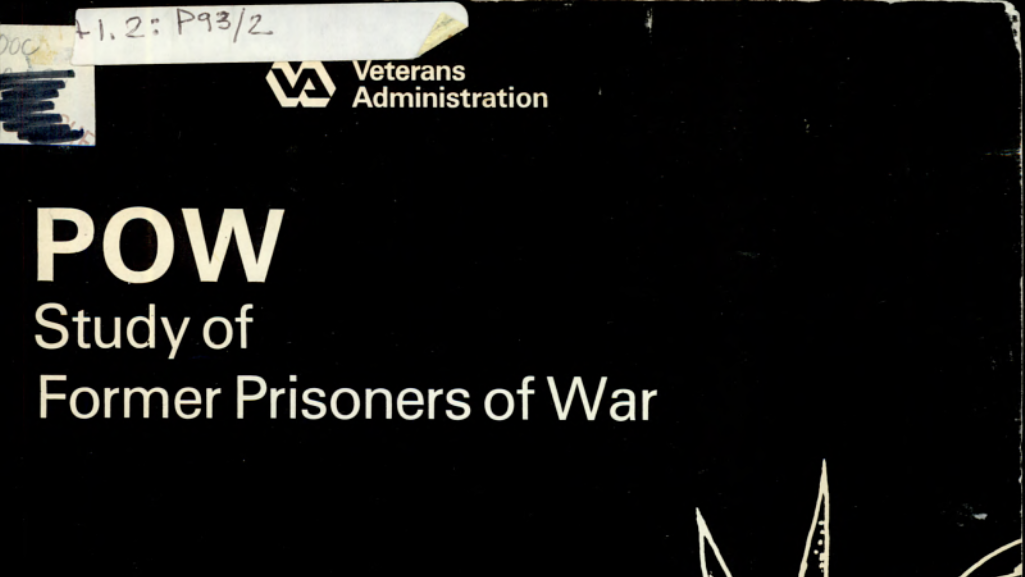
In early 1880, a journalist visited the monumental gateway arch at Chattanooga National Cemetery in Tennessee as it was nearing completion. He came away impressed. “The government has shown by this, if nothing else, her appreciation of her fallen dead,” he wrote in the Chattanooga Daily Times. “The archway by its hugeness, its immensity, Roman in its character, in its architecture military, conveys the very idea in itself, that it stands as a monument over the country’s dead.”
The Chattanooga archway is one of five masonry gates that originally served as entrances to select national cemeteries. Quartermaster General Montgomery C. Meigs proposed them in a letter to the Secretary of War in 1870. He suggested the gates for “several of the most important cemeteries” in the South once funding had been provided for essential activities, such as reburial of the dead and the marking of graves with wood headboards. By important, he meant national cemeteries containing the largest number of Union war dead, at least 10,000 graves. Seven arched gateways were planned but only five were realized, at Chattanooga and Nashville, Tennessee; Marietta, Georgia; Vicksburg, Mississippi; and Arlington, Virginia.
Work on the first arch, named for General George B. McClellan, commenced at Arlington National Cemetery in 1871. It was unique among the five structures in that it was made of locally quarried red Seneca sandstone. Limestone was used to construct the other four. All were completed by 1883 at a cost of between $6,000 and $7,000 each.

Meigs’ approach was to echo the gateways “erected at suburban cemeteries” using an architectural form already associated with the memorialization of war and its sacrifices. Monumental arches are built primarily for two reasons. Since the times of the Roman Empire, triumphal arches have been erected to celebrate military conquests and conquerors. These free-standing structures are usually placed in prominent civic locations, such as thoroughfares used as parade routes. Memorial arches, on the other hand, serve a different purpose. They are intended to honor and commemorate the dead and typically function as the gateway to a cemetery or a park, where they form part of the wall enclosing the property.
National cemetery gateways embody classical Roman architecture. The rusticated piers and arch are topped with a flat attic story. Doric columns flanking the arch support an entablature, and the whole stands around 32 feet high. An outward-facing inscription identifies the cemetery and the date it was established; inward-facing text indicates the number of Union Civil War soldiers buried there.
The arched gateways were among the largest and most formal structures built in the national cemeteries until the twentieth century. Today, only the Nashville and Marietta arches continue to serve as the primary entrance to the cemetery grounds. At the other locations, property expansions and changing traffic patterns render them passive relics. Despite these changes, the gateway arches remain stirring tributes to, in the words of the Chattanooga Daily Times writer from long ago, “those brave ones who bled and died for their country.”
Note: Arlington National Cemetery is managed by the Department of the Army; Vicksburg National Cemetery is managed by the National Park Service, Department of the Interior.
By Sara Amy Leach
Senior Historian, National Cemetery Administration
Share this story
Related Stories

History of VA in 100 Objects
Object 80: LUKE/DEKA Prosthetic Arm
In the 19th century, the federal government left the manufacture and distribution of prosthetic limbs for disabled Veterans to private enterprise. The experience of fighting two world wars in the first half of the 20th century led to a reversal in this policy.
In the interwar era, first the Veterans Bureau and then the Veterans Administration assumed responsibility for providing replacement limbs and medical care to Veterans.
In recent decades, another federal agency, the Defense Advanced Research Project Agency (DARPA), has joined VA as a supporter of cutting-edge research into artificial limb technology. DARPA’s efforts were spurred by the spike in traumatic injuries resulting from the emergence of improvised explosive devices as the insurgent’s weapon of choice in Iraq in 2003-04.
Out of that effort came the LUKE/DEKA prosthetic limb, named after the main character from "Star Wars."

History of VA in 100 Objects
Object 79: VA Study of Former Prisoners of War
American prisoners of war from World War II, Korea, and Vietnam faced starvation, torture, forced labor, and other abuses at the hands of their captors. For those that returned home, their experiences in captivity often had long-lasting impacts on their physical and mental health. Over the decades, the U.S. government sought to address their specific needs through legislation conferring special benefits on former prisoners of war.
In 1978, five years after the United States withdrew the last of its combat troops from South Vietnam, Congress mandated VA carry out a thorough study of the disability and medical needs of former prisoners of war. In consultation with the Secretary of Defense, VA completed the study in 14 months and published its findings in early 1980. Like previous investigations in the 1950s, the study confirmed that former prisoners of war had higher rates of service-connected disabilities.

History of VA in 100 Objects
Object 78: French Cross at Cypress Hills National Cemetery in Brooklyn
In the waning days of World War I, French sailors from three visiting allied warships marched through New York in a Liberty Loan Parade. The timing was unfortunate as the second wave of the influenza pandemic was spreading in the U.S. By January, 25 of French sailors died from the virus.
These men were later buried at the Cypress Hills National Cemetery and later a 12-foot granite cross monument, the French Cross, was dedicated in 1920 on Armistice Day. This event later influenced changes to burial laws that opened up availability of allied service members and U.S. citizens who served in foreign armies in the war against Germany and Austrian empires.



